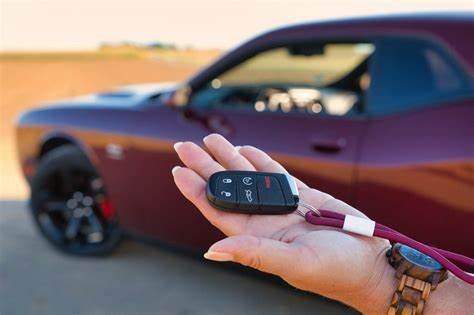If you’re planning to buy a car in 2025, you’re likely keeping a close eye on auto loan interest rates. After years of rising rates, many consumers are eager to know when relief might come. While it’s challenging to pinpoint an exact timeline, understanding the current landscape and employing strategic approaches can help you secure the best possible deal.
Auto Loan Rate Trends in 2025
Federal Reserve’s Influence
The Federal Reserve has played a pivotal role in shaping interest rates. In late 2024, the Fed implemented multiple rate cuts, leading to a slight decrease in auto loan rates. However, the economic landscape remains volatile, with inflationary pressures and global trade uncertainties, such as the recent 25% tariffs on foreign-made vehicles introduced by the Trump administration , potentially influencing future rate movements.
Current Rate Averages
As of early 2025, average auto loan rates are as follows:
- New Cars: Approximately 6.61% for a 60-month loan.
- Used Cars: Around 11.74% for a 48-month loan .
These rates represent a slight improvement from 2024 but remain elevated compared to historical norms.
Will Auto Loan Rates Decrease Further?
Predicting the exact trajectory of auto loan rates is challenging due to various influencing factors:
- Inflation: Persistent inflation can lead to higher interest rates as lenders adjust to maintain profitability.
- Trade Policies: Tariffs and trade tensions can increase vehicle prices, affecting loan amounts and terms.
- Economic Indicators: Metrics like the 10-year Treasury bond yield and consumer confidence play significant roles in rate adjustments.
While some experts anticipate modest rate reductions, substantial decreases may not occur until late 2025 or beyond .
Tips for Securing the Best Auto Loan Rates
Even in a high-rate environment, there are strategies to minimize your financing costs:
1. Improve Your Credit Score
Your credit score is a primary determinant of the interest rate you’ll receive. Steps to enhance your score include:
- Paying bills on time.
- Reducing outstanding debt.
- Avoiding new credit inquiries before applying for a loan.
2. Make a Larger Down Payment
A substantial down payment reduces the loan amount and signals to lenders that you’re financially responsible. Aim for at least 20% of the vehicle’s purchase price.
3. Opt for a Shorter Loan Term
While longer loan terms may offer lower monthly payments, they often come with higher interest rates. Choosing a 36- or 48-month term can result in lower overall interest costs.
4. Shop Around and Compare Lenders
Different lenders offer varying rates and terms. Consider obtaining pre-approval from multiple sources, such as banks, credit unions, and online lenders, to identify the best deal.
5. Time Your Purchase Strategically
Dealerships and lenders often provide better financing options during certain times:
- End of the Month/Quarter: Salespeople may offer better deals to meet quotas.
- Holiday Sales Events: Promotions during holidays can include reduced rates or cash incentives.
- Model Year-End Clearances: Purchasing vehicles from the previous model year can result in significant savings.
6. Consider Refinancing Later
If you’re unable to secure favorable rates initially, consider refinancing your loan in the future as your credit improves or market conditions change.
Frequently Asked Questions (FAQs)
1. What is considered a good interest rate for an auto loan in 2025?
A good rate varies based on your credit score:
- Excellent Credit (750+): Rates around 6% or lower.
- Good Credit (700–749): Rates between 6% and 8%.
- Fair Credit (650–699): Rates from 8% to 12%.
- Poor Credit (below 650): Rates can exceed 12%.
2. How can I lower my monthly car payment?
To reduce your monthly payment:
- Increase your down payment.
- Choose a shorter loan term.
- Shop for a less expensive vehicle.
- Refinance your loan if your credit improves.
3. Are there any special financing programs available?
Yes, many manufacturers and dealerships offer:
- Cash rebates: Direct discounts on the vehicle price.
- Low or 0% APR financing: Reduced or no interest rates for qualified buyers.
- Loyalty incentives: Discounts for returning customers.
4. Should I buy a new or used car in 2025?
While new cars often come with better financing options, used cars can be more affordable upfront. Consider your budget, financing options, and the vehicle’s condition when making your decision.




